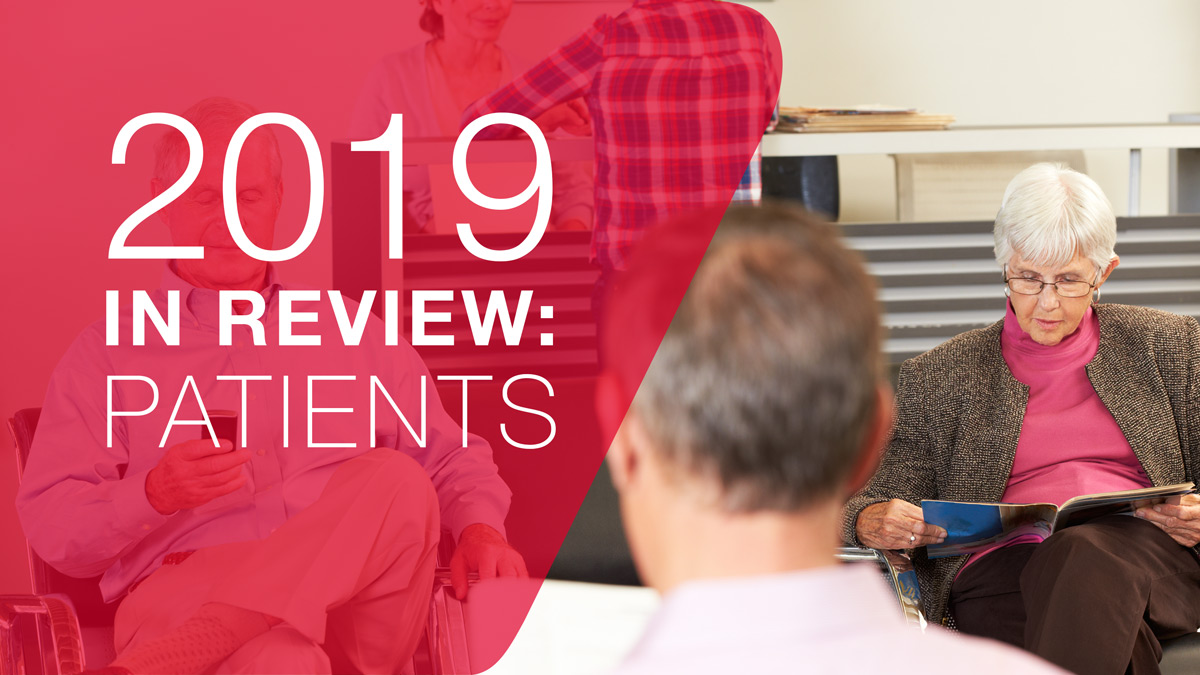A year of building patient centric foundations

It’s been a year of putting patient centricity theory into practice, as companies and industry organisations alike have shared their advice and embraced emerging technologies.
Patient centricity is no longer a “nice to have”, but an essential part of any pharmaceutical and biotechnology organisation.
It’s a conclusion the industry came to some time ago, but what was less certain at the start of the year was how to move from “talking” to “doing”.
As we look back over 2019 on pharmaphorum, it’s clear that the industry has been building the foundations it needs to embed patient engagement and involvement into business functions from R&D to market access and beyond.
Bec Hanley, the Charities Research Involvement Group
Assistive technology
Back in January, chief medical officer at Pfizer’s Hospital Business Unit, Pol Vandenbroucke, told pharmaphorum that patient centricity was “without a doubt the most important factor changing the way we work”.
“Whereas previously we inferred patients’ input through our engagement with the medical community, patient engagement is now essential not only in order to develop new drugs but also to provide insights for medicines that are already approved and on the market,” he said.
This is more straightforward in some therapeutic areas, he went on. While some have well-established patient organisations with strong knowledge of the development process, in others it can be difficult to find representative input.
Technology is playing an increasingly important role in breaking down barriers between pharma and the people they seek to serve.
Real-world data, for example, is “critical” in “today’s world, where regulators and payers are looking for additional data to help support registrational studies and show the evidence of how medicine is working”, Sonal Bhatia, Pfizer’s vice president and North America medical lead, said in April.
She said: “RWE helps to address cost effectiveness of the medicine in the real world setting that can be of enhanced value to the payers.”
Industry leaders
As well as a greater utilisation of technologies, such as electronic clinical trials and software designed to help underserved communities access research, 2019 has also seen a proliferation of frameworks and practical guides.
In June, the Association of the British Pharmaceutical industry (ABPI), the National Institute of Health Research (NIHR) and the Association of Medical Research Charities (AMRC) held the second Pioneering Partnerships conference
During the event, the ABPI launched a practical guide to “doing” patient centricity within the confines of the Code of Practice, called Working with Patients and Patient Organisations: A sourcebook for industry.
Sheuli Porkess, deputy chief scientific officer at the ABPI, told pharmaphorum: “The ABPI thinks this is really important, and we want to make sure that we are very clear and very explicit on that point. The aim is to build public involvement and patient engagement into the whole system, across the whole sector.
“We are learning from the companies that are doing this already and developing tools and metrics that will help organisations embed involvement into their processes and overcome the barriers.”
And it’s not just industry-facing groups that have placed greater partnership working on their agenda this year.
In October, we reported on a publication from the Charities Research Involvement Group and Health Research Charities Ireland, which provided practical advice on bridging the gap between industry and patient groups.
Bec Hanley, facilitator of the Charities Research Involvement Group, said she hoped the document would support the effective development of “meaningful and productive relationships”.
“For a long time, working with industry felt too hard,” she said. “But recently there seems to have been a growing interest in involvement in this type of research – not just from an increasing number of charities, but also from more and more pharmaceutical companies.
Sharing success
Patient centricity has come a long way in recent years, but it’s still a relatively new concept, meaning shared learning is “crucial”, said the NIHR’s National Director for Patients, Carers and the Public.
“We need to bring all the partners together and offer them peer support to do this. And we need to explain what ‘good’ looks like,” he told us in June.
Since then, pharmaphorum has published a series of features called Towards Patient Centricity, giving companies the opportunity to share their own success stories, so the whole industry can learn.
As GSK’s Dr Karen Muller, VP and country medical director, UK and Ireland, told us in September, embedding patient centricity into a company’s DNA isn’t always easy – and working together is key to getting it right.
“We are ready to adapt to changes in policy and regulation so that we can continue to add value for patients,” she said.
“We would also welcome the ability to participate in industry working groups that aim to provide strategic direction for patient engagement, as well as strengthening how patient insight is used to develop innovative new medicines.”
The dial is certainly shifting, and 2019 has seen many of the foundations of patient centric success developed and moved into place.
The next step, according to many people we have spoken to this year, is cross-sector collaboration.
Would you like to share how your company has been working to embed the patient voice into its everyday work? Email george.underwood@pharmaphorum.com to take part in pharmaphorum’s Towards Patient Centricity series.




